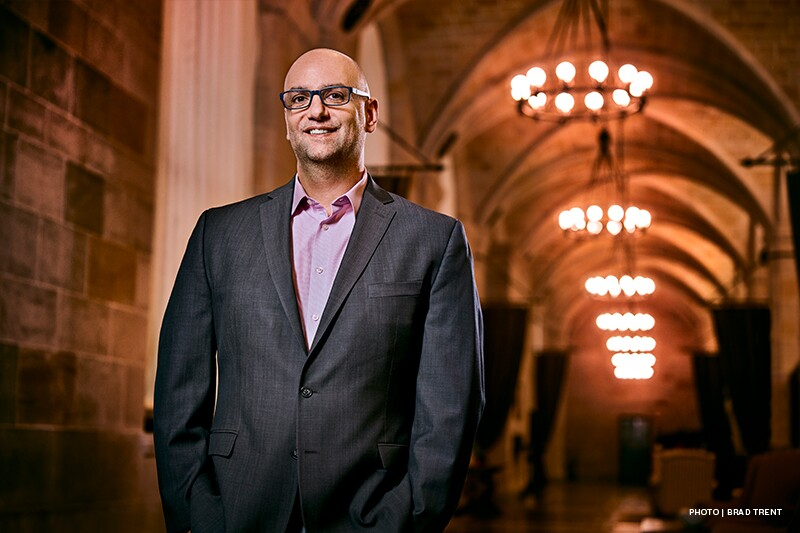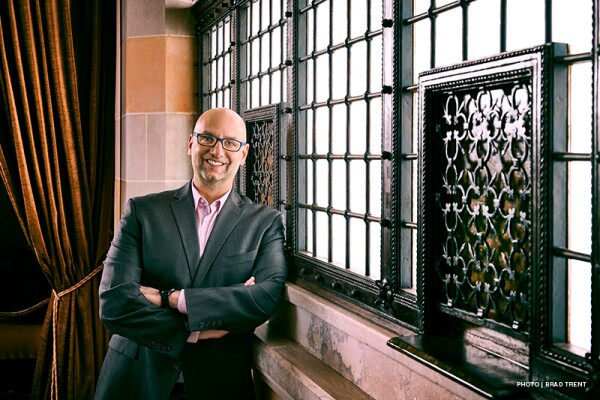Talent Development Leader
Banking on Holistic Development
Wed Apr 19 2023

At the Federal Reserve Bank of New York, employees not only need core knowledge of the finance and banking industry as well as compliance requirements and procedures; they must have expertise in general leadership skills, such as communication, and emerging and technical areas, such as data analysis. Employees likewise must stay up to date on the technology and tools they use every day.
According to Jeremy Manjorin, the organization’s chief learning officer, that broad spectrum of skills demands a “holistic approach to employee development that takes into consideration not just the technical [skills] but the values and behaviors we want at the New York Fed.”
Given that experience levels among workers can range from people with doctorates to those in their first year of work, Manjorin notes, that variance can complicate the development and rollout of learning initiatives.
“We really have to make sure that we are focused on the learning needs of the total employee population, whether they’ve been here for one year or 30 years, and in whatever group they work in. It’s a challenge,” he admits.
Mission-driven learning
The Federal Reserve, commonly called the Fed, is an independent governmental entity created by Congress in 1913 to serve as the central bank of the US. The Federal Reserve Bank of New York is one of 12 regional banks that work within that system to foster economic and financial stability and vitality throughout the country.
“We’re a mission-driven organization. Our goal is to make the US economy strong and create a stable financial system for all segments of society,” says Manjorin.
Although the New York Fed serves a geographically small area compared with the other Federal Reserve banks, it is the largest in terms of assets and volume of activity. Chief among the functions for its approximately 3,000 employees is the implementation of monetary policy, one of the Fed’s three central missions. The other two missions are international operations and supervision and regulation.
Carrying out those missions requires its workforce to have a wide array of skills and competencies.
Mapping skills
Like in many organizations, while the various roles at the New York Fed seem significantly different on the surface, they typically have common skills. To get a better handle on the shared and distinctive skills of each job, the New York Fed embarked on an organization-wide skills-mapping journey.
“We have taken on a skills-based approach to talent development at the bank. This means you have a holistic understanding of your workforce—really understanding the roles, then mapping those roles to specific skills,” Manjorin explains.
The New York Fed started the initiative by conducting an analysis of all roles throughout the entire workforce, isolating the skills, knowledge, and competencies required for each. The first pass at mapping skills was automated, using market data and job descriptions and then marrying that information to the New York Fed’s internal profiles to create extensive skills taxonomies.
“There’s technology that helps facilitate skills analysis, but it also requires a lot of input from subject matter experts,” Manjorin states. “This was a bankwide effort. It’s not just an HR effort. It’s not just the talent development department or the organizational effectiveness department. We needed subject matter expertise at all levels.”
After the initial intake, the teams worked with subject matter experts to validate the information gathered and align similar skills and competencies to each role as well as help define requirements for demonstrating proficiency. For example, when defining competencies around project management, specific skills may be the same, but the proficiency level for an entry-level project manager will of course be different from that of an experienced project manager.
“SMEs would go in and review all the roles within their function, evaluate the skills we identified, and calibrate the assigned proficiency levels,” Manjorin shares.
The teams worked with SMEs to conduct several levels of validation. The result is a complete skill ontology and architecture with mechanisms in place to update the architecture as additional roles and skills emerge.
“The skills ontology is not set stone,” Manjorin explains. “As new roles develop, it grows and evolves too.”

Linking skills to development
“The driving force behind skills mapping was so that our people could get a better understanding of their skills and career development planning, and the organization could get better at enabling the development of our talent,” he adds.
Manjorin notes that a skills-based approach helped his team cultivate a heightened awareness of the organization’s learning needs and opportunities, in addition to its existing training and development resources. By having individual skills and competencies identified for each role, the team was able to connect them to workshops, online learning programs, training programs provided through content partners such as LinkedIn Learning, and microlearning assets.
In addition, the talent development team used the gathered information to create a variety of learning paths that guide employees to deeper skill proficiency. Fortunately, many assets and programs work for multiple roles. More importantly, the learning function was able to spot gaps among its learning deliverables and determine where it needed to build, refresh, or buy new learning solutions.
“Skills mapping helped us gain insight into the most coveted or sought-after skills as well as where the organization had opportunities to provide the right learning,” Manjorin states. “For the learning function, it’s a way to see those opportunities at a glance. It was transformative from a strategy and planning perspective.”
During the past 18 months, the talent development team has built a robust catalog of offerings and paths that enable employees to self-serve development. “What we really want to do is change the model from ‘We’re going to push learning to people’ to where managers and employees say, ‘This is what I want to develop’ and simply access it,” explains Manjorin.
“And if individual employees or managers do not see what they need, we encourage them to let us know. They can tell us what type of skills they want and why they need to develop them. That type of feedback is baked into the infrastructure of the catalog.”
What’s more, when employees are looking to develop a skill or competency, the catalog enables them to search assets such as formal workshops and e-learning programs that are part of a learning path. But there’s another learning component outside of the formal aspect of a learning catalog.
The organization has released a marketplace of on-the-job learning experiences that fall outside of a classroom-based approach. In fact, the New York Fed has formalized such experiential development opportunities into what it calls gigs.
“These gigs are longer-term opportunities where employees go to a different department, function, or group to work for a specified number of hours a week over the course of a few months,” Manjorin states. “They focus on performing tasks that offer identifiable skill development and experiential learning opportunities.”
While those short-term, project-based assignments always existed, he asserts that there is now a “more intentional effort toward tying gigs to specific skills and a focus on an employee’s skill development.”
Any department can launch a gig. For example, let’s say a team has a major project on the horizon. The manager can create a gig that the entire workforce can view. The gig profile must pinpoint specific skill development opportunities the employee will gain from the experience, making it a far more valuable endeavor.
“We changed it from simple ‘Department X needs a pair of hands’ to ‘this is a development opportunity,’” Manjorin explains. “That narrative shift and the ability to see how the work benefits the employee’s development right in the gig’s description invigorates our people around talent development.”
Opportunities to develop select skills needs to be distributed broadly throughout the organization. Just as anyone can launch a gig, any employee can apply for one. Manjorin describes how having workers participate in gigs in other departments creates a competency boost for their original team as well.
“Maybe a team needs a certain skill or more likely a higher proficiency level of that skill. Or perhaps an employee is really interested in learning a skill or raising their proficiency so they can move their career to the next level. Training will only get them so far without experiential learning and on-the-job experience.”
He adds: “Gigs are not only about filling a resource need. It’s actually about ‘How can we build skills organization-wide and nurture networks? How can we cross-pollinate the workforce?’ Learning from people who have the skills is really what gets people to advance in their careers.”
What’s next?
“Our people are seeking a stronger understanding of their own career potential and development. They’re looking for career mobility,” says Manjorin. “They want awareness and insight of not only their current role and skills but skills for future roles. They want a better understanding of career planning.”
He imparts that people leaders at the New York Fed are also starting to look for more development and mobility opportunities for their people.
“Aligning skills through roles helps bolster the idea of mobility because we can look at different skills and see how some skills are usable across different roles. That opens up more opportunities within the bank,” Manjorin explains.
“This holistic approach to skills and development makes it easier for our employees at the New York Fed to identify their own career path and start planning their own development journey.”
The views expressed in this article are the author’s and do not necessarily represent those of the Federal Reserve Bank of New York or the Federal Reserve System.
